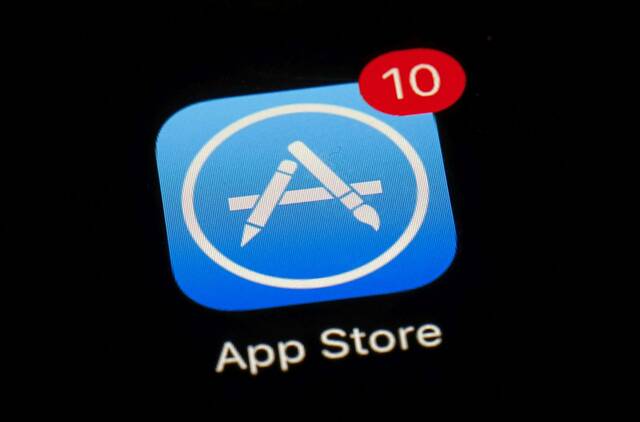John Dorfman: My buy-sell ratings on the 20 largest stocks
Share this post:
You won’t find Facebook or Procter & Gamble in the portfolios I run. But that doesn’t mean I never think about them.
Once a year in this column, I give my “buy” or “avoid” opinion on the 20 largest stocks. Here are my latest ratings, from the very largest (Apple) to the merely immense (Adobe).
Apple Inc. (AAPL, $2.4 trillion market cap) — Buy. The iPhone rolls on. Apple’s app store in the future will no longer be quasi-fantastic.
Microsoft Corp. (MSFT, $2.2 trillion) — Avoid. Operating results have gone from strong to even stronger, but I feel the stock is fully valued at 14 times revenue.
Alphabet Inc. (GOOG, $1.9 trillion) — Buy. I consider Alphabet the most innovative company in the U.S. It owns Google, YouTube, Waymo and Deep Mind.
Amazon.com Inc. (AMZN, $1.7 trillion) — Avoid. The pandemic accelerated the trend to online shopping, but that tailwind might abate in the next few months.
Facebook Inc. (FB, $995 billion) — Avoid. Highly profitable, but I think the company’s lack of customer service, carelessness with customer data and capricious enforcement of its own rules eventually will cause it problems.
Tesla Inc. (TSLA, $775 billion) — Avoid. People tend to love Tesla or hate it. With the stock at 162 times estimated earnings, I certainly don’t love it.
Berkshire Hathaway Inc. (BRK.B, $629 billion) — Buy. I know that genius CEO Warren Buffett can’t live forever, but I think he has built a wonderful combination of businesses.
Nvidia Corp. (NVDA, $552 billion) — Avoid. Its chips enjoy huge demand, especially for gaming and cryptocurrency mining. But the stock is simply too expensive in my opinion.
Visa Inc. (V, $508 billion) — Avoid. Visa has been a superb company for ages, but revenue growth slowed to a crawl last year, even though the economy did surprisingly well.
JP Morgan Chase & Co. (JPM, $487 billion) — Buy. This stock sells for less than 11 times earnings in a pricey market, and I like CEO Jamie Dimon.
Johnson & Johnson (JNJ, $433 billion) — Buy. Its business model, with dozens of health care businesses each enjoying some autonomy, has worked well. Revenue and earnings accelerated last year.
Walmart Inc. (WMT, $399 billion) — Avoid. Its discount stores hold up well when times are tough, but in 2022 I think some consumers will be moving up to more expensive stores.
UnitedHealth Group Inc. (UNH, $384 billion) — Avoid. Profits lately have been subdued, and dividend growth has slowed. I don’t think it’s bad, but I can’t get excited about it.
Home Depot Inc. (HD, $356 billion) — Avoid. The company is in a good niche, but I don’t like the balance sheet. Debt is 20 times stockholders’ equity.
Bank of America Corp. (BAC, $355 billion) — Avoid. The stock is modestly valued, which is a big plus. But return on assets is just under 1%. I like to see banks above that level.
Mastercard Inc. (MA, $353 billion) — Avoid. Still a wonderful company, but, like Visa, it has slowed down a bit lately. And the stock is expensive at 21 times revenue.
Procter & Gamble Co. (PG, $349 billion) — Avoid. The classic consumer-staples stock, with brands such as Pampers, Tide, and Charmin, is well run and steady. Yet I feel the stock is slightly too expensive for what the company is.
PayPal Holdings Inc. (PYPL, $327 billion) — Avoid. This newcomer to the largest-stocks list sells for 62 times forward earnings. Value investors like me balk at such things.
Walt Disney Co. (DIS, $320 billion) — Buy. Disney’s stock had a good run last year but hasn’t done much this year. I think it will get another leg up as theme parks and movie theaters reopen.
Adobe Inc. (ADBE, $297 billion) — Avoid. This is another great company that sells at high multiples — for example, 51 times recent earnings. It’s not my cup of tea.
Past record
My “buy” recommendations on this list last year returned a little over 40%. My “avoids” were up 36%, while the Standard & Poors’ 500 Index was up almost 35%.
Longer term (over 17 years), my record on rating the largest stocks is undistinguished. My “buys” and “avoids” have each risen about 13% on average. Meanwhile, the S&P 500 has averaged 14.5%.
Bear in mind that my column results are hypothetical: They don’t reflect actual trades, trading costs or taxes. These results shouldn’t be confused with the performance of portfolios I manage for clients. Also, past performance doesn’t predict future results.
Disclosure: I own Apple, Alphabet, Berkshire Hathaway and Walt Disney personally and for most of my clients. I own JP Morgan and Johnson & Johnson for some clients. My wife and some clients own Adobe, Amazon, Home Depot, Microsoft and Nvidia.


